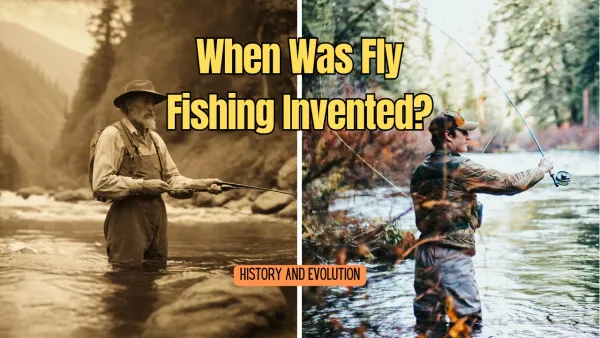Fly fishing is an art that combines skill, patience, and the right equipment. For beginners, choosing the best fly fishing rods can be a daunting task. With so many options available, it's essential to understand what makes a rod suitable for a novice angler. This guide will walk you through everything you need to know about selecting the best fly fishing rods for beginners.
Key Takeaways:
- Understanding Fly Fishing Rods: Learn about the different types of fly fishing rods and their specific uses.
- Choosing the Right Gear: Discover the essential gear for beginners, including rods, reels, lines, and flies.
- Practical Tips for Beginners: Get practical advice on improving your casting skills and selecting the right equipment.
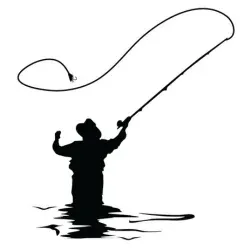
Introduction to Fly Fishing
Fly fishing is not just about catching fish; it's about the experience. The right rod can make a significant difference in your enjoyment and success. Whether you're fishing in small streams or large rivers, having the right gear is crucial. Let's dive into the world of fly fishing and explore the best options for beginners.
Understanding Fly Fishing Rods
Fly rods come in various lengths, weights, and actions. The length of the rod affects your fly cast distance and accuracy. For beginners, a rod between 8 to 9 feet is ideal. This length provides a good balance between control and distance, making it easier to learn the basics of casting.
The weight of the rod is another critical factor. Rod weights range from 1 to 14, with lower numbers suitable for smaller fish and higher numbers for larger fish. For beginners, a 5 or 6-weight rod is a versatile choice. It can handle a variety of fishing situations, from small trout to larger bass.
Types of Fly Fishing Rods
There are three main types of fly fishing rods: fast action, medium action, and slow action. Fast action rods are stiff and provide quick, powerful casts. They are ideal for long distances and windy conditions. However, they can be challenging for beginners to control.
Medium action rods offer a balance between power and flexibility. They are more forgiving and easier to cast, making them an excellent choice for beginners. Slow action rods are the most flexible and provide gentle, accurate casts. They are suitable for small streams and delicate presentations.
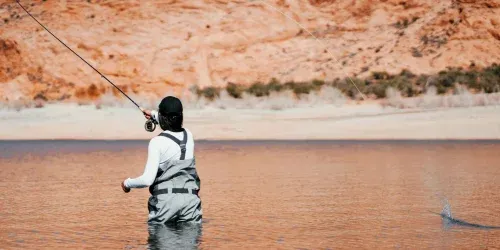
Choosing the Right Fly Rod
When selecting a fly rod, consider the type of fishing you plan to do. If you're fishing in small streams, a shorter rod with a lighter weight is ideal. For larger rivers and lakes, a longer rod with a heavier weight is better suited. Think about the type of fish you want to catch and the conditions you'll be fishing in.
Another important factor is the rod's action. For beginners, a medium action rod is a great starting point. It provides a good balance of power and flexibility, making it easier to learn casting techniques. As you gain experience, you can experiment with different rod actions to find what works best for you.
Essential Fly Fishing Gear
In addition to a fly rod, you'll need several other pieces of gear to get started. A fly reel is essential for holding your line and providing drag when fighting fish. Look for a reel that matches the weight of your rod and has a smooth drag system.
Fly lines come in various types, including floating, sinking, and intermediate. For beginners, a floating line is the most versatile and easiest to use. You'll also need a few flies, which are the lures used in fly fishing. Dry flies float on the surface, while wet flies sink below the water. Start with a basic selection of both types.
Fly Fishing Kits for Beginners
Many manufacturers offer fly fishing kits specifically designed for beginners. These kits typically include a rod, reel, line, and a selection of flies. They are a convenient and cost-effective way to get started. Look for a kit that includes a medium action rod and a floating line, as these are the most versatile options for beginners.
A good beginner kit will also include a carrying case to protect your gear and keep everything organized. Some kits even come with instructional materials to help you learn the basics of fly fishing. Investing in a quality kit can save you time and money in the long run.
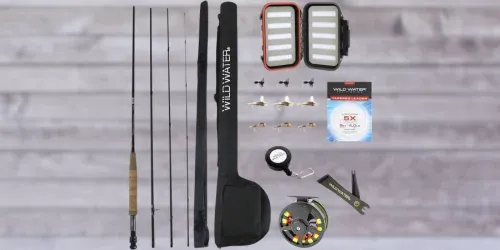
The Importance of Line Weight
Line weight is a crucial factor in fly fishing. It determines how well your rod and reel will perform together. The weight of the line should match the weight of your rod. For example, if you have a 5-weight rod, you should use a 5-weight line. This ensures that your casts are smooth and accurate.
Using the wrong line weight can make casting difficult and reduce your chances of catching fish. Beginners should start with a floating line, as it is the easiest to cast and works well in most fishing situations. As you gain experience, you can experiment with different line weights and types.
Selecting the Right Flies
Flies are the lures used in fly fishing, and they come in various shapes, sizes, and colors. The type of fly you use depends on the fish you're targeting and the conditions you're fishing in. Dry flies float on the surface and are used to imitate insects. Wet flies sink below the water and mimic small fish or other aquatic creatures.
For beginners, it's essential to have a basic selection of both dry and wet flies. Start with a few popular patterns, such as the Adams, Elk Hair Caddis, and Woolly Bugger. These flies are effective in a variety of situations and are easy to use. As you gain experience, you can expand your collection and experiment with different patterns.
Fly Reels for Beginners
A fly reel is an essential piece of gear that holds your line and provides drag when fighting fish. For beginners, a simple, reliable reel is the best choice. Look for a reel that matches the weight of your rod and has a smooth drag system. This will make it easier to control your line and land fish.
There are two main types of fly reels: click-and-pawl and disc drag. Click-and-pawl reels are simple and lightweight, making them ideal for beginners. Disc drag reels offer more stopping power and are better suited for larger fish. Choose a reel that fits your needs and budget.
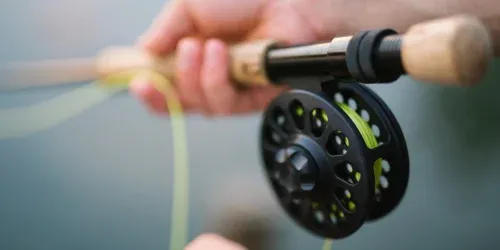
The Role of Rod Action
Rod action refers to how much the rod bends when casting. There are three main types of rod action: fast, medium, and slow. Fast action rods are stiff and provide quick, powerful casts. They are ideal for long distances and windy conditions but can be challenging for beginners to control.
Medium action rods offer a balance between power and flexibility. They are more forgiving and easier to cast, making them an excellent choice for beginners. Slow action rods are the most flexible and provide gentle, accurate casts. They are suitable for small streams and delicate presentations.
Casting Techniques for Beginners
Casting is one of the most critical skills in fly fishing. For beginners, learning the basic casting techniques is essential. Start with the overhead cast, which is the most common and versatile cast. Practice your timing and aim to achieve smooth, controlled casts.
Another useful technique is the roll cast, which is ideal for fishing in tight spaces or when you have limited room for a backcast. Practice both techniques to become a more versatile angler. Remember, casting takes time and practice, so be patient and keep practicing.
The Importance of Practice
Like any skill, fly fishing requires practice. Spend time practicing your casting techniques in a variety of conditions. This will help you become more comfortable and confident on the water. Practice makes perfect, so don't be discouraged if you don't catch fish right away.
In addition to casting, practice your line management and knot-tying skills. These are essential for successful fly fishing. The more you practice, the better you'll become. Consider joining a local fly fishing club or taking a class to learn from experienced anglers.
Choosing the Right Fishing Locations
The location you choose to fish can have a significant impact on your success. For beginners, it's best to start in areas with plenty of fish and easy access. Look for local ponds, lakes, or rivers that are known for good fishing. These locations are often stocked with fish and provide a great learning environment.
As you gain experience, you can explore more challenging fishing locations. Research different fishing spots and talk to local anglers to find the best places to fish. Remember, the key to successful fly fishing is finding the right location and using the right gear.
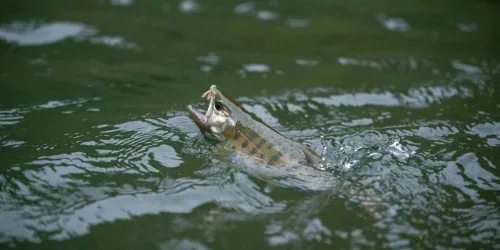
Understanding Fish Behavior
Understanding fish behavior is essential for successful fly fishing. Fish are more likely to bite when they are feeding, so it's important to know when and where they are most active. Pay attention to the time of day, weather conditions, and water temperature.
Fish are often more active in the early morning and late evening when the water is cooler. They are also more likely to feed during overcast days or when there is a light rain. Understanding these patterns can help you choose the best times to fish and increase your chances of success.
The Role of Weather Conditions
Weather conditions play a significant role in fly fishing. Different weather patterns can affect fish behavior and feeding habits. For example, fish are often more active during overcast days or when there is a light rain. These conditions can make fishing more productive.
On the other hand, bright, sunny days can make fish more cautious and less likely to bite. Windy conditions can also make casting more challenging. Pay attention to the weather forecast and plan your fishing trips accordingly. Understanding how weather affects fish behavior can help you become a more successful angler.
The Importance of Patience
Patience is a virtue in fly fishing. It's not uncommon to spend hours on the water without catching a fish. The key is to stay patient and persistent. Remember, fly fishing is about the experience, not just the catch. Enjoy the process and appreciate the time spent in nature.
If you're not having any luck, try changing your location or switching to a different fly. Sometimes, a small adjustment can make a big difference. Stay positive and keep trying. With practice and patience, you'll become a more successful fly fisher.
Fly Fishing Etiquette
Fly fishing etiquette is essential for maintaining a positive experience for all anglers. Always be respectful of other fishermen and give them plenty of space. Avoid crowding other anglers and be mindful of your casting distance.
When fishing in public areas, follow all local regulations and guidelines. Practice catch and release whenever possible to help preserve fish populations. Respect the environment and leave no trace. By following these guidelines, you can help ensure a positive experience for everyone.
The Benefits of Fly Fishing
Fly fishing offers numerous benefits beyond just catching fish. It's a great way to connect with nature and enjoy the outdoors. The peaceful, meditative nature of fly fishing can help reduce stress and improve mental well-being.
Fly fishing also provides a sense of accomplishment and satisfaction. Learning new skills and techniques can be rewarding, and the thrill of catching a fish on a fly is unmatched. Whether you're fishing alone or with friends, fly fishing is a great way to relax and have fun.
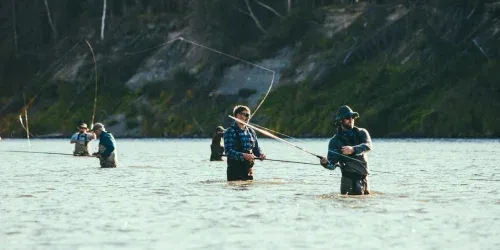
Fly Fishing for Different Species
Fly fishing is not limited to just trout. You can target a variety of species, including bass, salmon, and even saltwater fish. Each species requires different techniques and gear, so it's essential to do your research and prepare accordingly.
For example, bass fishing often involves using larger flies and heavier rods. Saltwater fly fishing requires specialized gear to handle the harsh conditions and powerful fish. Experiment with different species and techniques to expand your fly fishing skills and experience.
The Role of Wading Boots
Wading boots are an essential piece of gear for fly fishing. They provide traction and support when fishing in moving water. Look for boots with a good grip and comfortable fit. Felt soles are popular for their excellent traction on slippery rocks, while rubber soles are more durable and suitable for various terrains.
Wading boots also protect your feet from sharp rocks and other hazards. Invest in a good pair of wading boots to ensure your safety and comfort on the water. Remember to clean your boots after each use to prevent the spread of invasive species.
The Importance of Line Management
Line management is a crucial skill in fly fishing. Properly managing your line can help you achieve better casts and avoid tangles. Practice keeping your line organized and free of knots. Use a stripping basket or line tray to help manage your line when fishing in moving water.
Pay attention to your line's position and avoid letting it drag in the water. This can create unwanted tension and affect your casting accuracy. With practice, you'll become more proficient at managing your line and improving your overall fly fishing experience.
Fly Fishing in Small Streams
Small streams offer unique challenges and opportunities for fly fishing. The confined space requires precise casting and careful line management. Use shorter rods and lighter lines to navigate the tight quarters and avoid spooking fish.
Small streams often hold smaller fish, so use smaller flies and delicate presentations. Pay attention to the water's flow and structure to identify likely fish-holding spots. Fishing in small streams can be a rewarding experience, offering solitude and the chance to catch wild, native fish.
Fly Fishing in Larger Rivers
Larger rivers provide more space and opportunities for fly fishing. The increased flow and depth require longer rods and heavier lines. Use a variety of casting techniques to cover more water and reach distant fish-holding spots.
Larger rivers often hold bigger fish, so use larger flies and stronger tippets. Pay attention to the river's structure and current to identify likely feeding areas. Fishing in larger rivers can be challenging but rewarding, offering the chance to catch trophy-sized fish.
Fly Fishing in Lakes and Ponds
Lakes and ponds offer a different fly fishing experience compared to rivers and streams. The still water requires different techniques and gear. Use longer rods and floating lines to cover more water and reach distant fish.
Lakes and ponds often hold a variety of fish species, including bass, trout, and panfish. Experiment with different flies and presentations to find what works best. Pay attention to the water's structure and temperature to identify likely fish-holding spots. Fly fishing in lakes and ponds can be a relaxing and productive experience.
Fly Fishing in Saltwater
Saltwater fly fishing offers unique challenges and opportunities. The harsh conditions and powerful fish require specialized gear and techniques. Use heavier rods and lines to handle the strong currents and large fish.
Saltwater fly fishing often involves sight fishing, where you spot fish and cast directly to them. This requires precise casting and quick reflexes. Pay attention to the tides and weather conditions to identify the best times to fish. To fly fish in saltwater can be an exciting and rewarding experience, offering the chance to catch a variety of species.
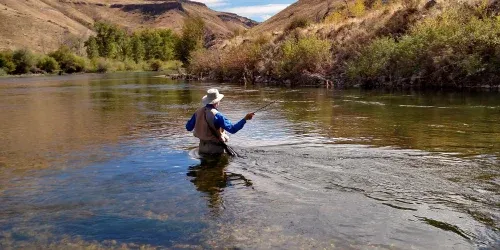
The Role of Tippets and Leaders
Tippets and leaders are essential components of your fly fishing setup. The leader connects your fly line to the tippet, which is the final section of line that attaches to your fly. Use a tapered leader to ensure smooth, accurate casts.
The tippet should match the size of your fly and the fish you're targeting. Use a stronger tippet for larger fish and a lighter tippet for smaller fish. Properly matching your tippet and leader to your fly and fishing conditions can improve your casting accuracy and increase your chances of success.
The Importance of Knot-Tying Skills
Knot-tying is a crucial skill in fly fishing. Properly tying knots ensures that your gear stays secure and your flies are presented correctly. Practice tying essential knots, such as the improved clinch knot, the loop knot, and the surgeon's knot.
Use high-quality tippet material and take your time to tie each knot carefully. Test your knots before fishing to ensure they are secure. With practice, you'll become more proficient at tying knots and improving your overall fly fishing experience.
Fly Fishing for Trout
Trout are one of the most popular species for fly fishing. They are found in a variety of habitats, from small streams to large rivers and lakes. Use lighter rods and lines to match the size of the fish and the conditions you're fishing in.
Trout are often more active in cooler water and during specific times of the day. Pay attention to the water temperature and the presence of insects to identify the best times to fish. Use a variety of flies, including dry flies, nymphs, and streamers, to match the trout's feeding habits.
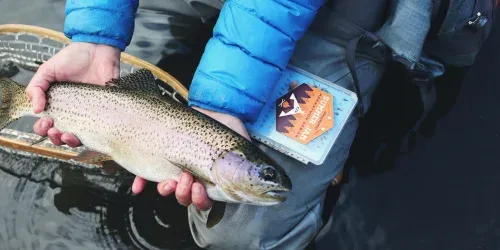
Fly Fishing for Bass
Bass are another popular species for fly fishing. They are found in lakes, ponds, and rivers and are known for their aggressive strikes and powerful fights. Use heavier rods and lines to handle the larger flies and stronger fish.
Bass are often more active during warmer water temperatures and around structure, such as rocks, logs, and vegetation. Use a variety of flies, including poppers, streamers, and crayfish patterns, to entice bass to strike. Fly fishing for bass can be an exciting and rewarding experience.
Fly Fishing for Salmon
Salmon are a challenging and rewarding species for fly fishing. They are found in rivers and streams, often during their spawning runs. Use heavier rods and lines to handle the powerful fish and strong currents.
Salmon are often more active during specific times of the year and in specific locations. Research the best times and places to fish for salmon in your area. Use a variety of flies, including streamers and egg patterns, to match the salmon's feeding habits. Fly fishing for salmon can be a thrilling and rewarding experience.
Fly Fishing for Panfish
Panfish, such as bluegill and crappie, are a great species for beginners. They are found in lakes, ponds, and rivers and are known for their willingness to bite. Use lighter rods and lines to match the size of the fish and the conditions you're fishing in.
Panfish are often more active during warmer water temperatures and around structure, such as rocks, logs, and vegetation. Use a variety of flies, including small poppers, nymphs, and wet flies, to entice panfish to bite. Fly fishing for panfish can be a fun and productive experience.
Fly Fishing for Pike
Pike are a challenging and exciting species for fly fishing. They are found in lakes, ponds, and rivers and are known for their aggressive strikes and powerful fights. Use heavier rods and lines to handle the larger flies and stronger fish.
Pike are often more active during cooler water temperatures and around structure, such as rocks, logs, and vegetation. Use a variety of flies, including large streamers and baitfish patterns, to entice pike to strike. Fly fishing for pike can be a thrilling and rewarding experience.
Fly Fishing for Carp
Carp are a challenging and rewarding species for fly fishing. They are found in lakes, ponds, and rivers and are known for their cautious behavior and powerful fights. Use heavier rods and lines to handle the larger flies and stronger fish.
Carp are often more active during warmer water temperatures and around structure, such as rocks, logs, and vegetation. Use a variety of flies, including nymphs, crayfish patterns, and bread imitations, to entice carp to bite. Fly fishing for carp can be a challenging and rewarding experience.
Fly Fishing for Saltwater Species
Saltwater fly fishing offers unique challenges and opportunities. The harsh conditions and powerful fish require specialized gear and techniques. Use heavier rods and lines to handle the strong currents, big flies, and large fish.
Saltwater fly fishing often involves sight fishing, where you spot fish and cast directly to them. This requires precise casting and quick reflexes. Pay attention to the tides and weather conditions to identify the best times to fish. Saltwater fly fishing can be an exciting and rewarding experience, offering the chance to catch a variety of species.
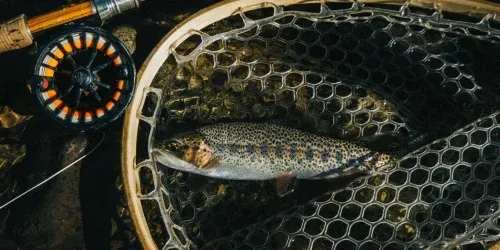
The Role of Fly Shops
Fly shops are a valuable resource for beginners. They offer a wide selection of gear, including rods, reels, lines, and flies. The staff at fly shops are often experienced anglers who can provide valuable advice and recommendations.
Visit your local fly shop to get personalized recommendations and learn about the best gear for your needs. Many fly shops also offer casting lessons, fly-tying classes, and guided trips to help you improve your skills and gain practical experience. Additionally, fly shops often serve as community hubs where you can connect with other anglers, share stories, and stay updated on local fishing conditions and events. By supporting your local fly shop, you not only enhance your own fly fishing journey but also contribute to the vitality of the angling community.
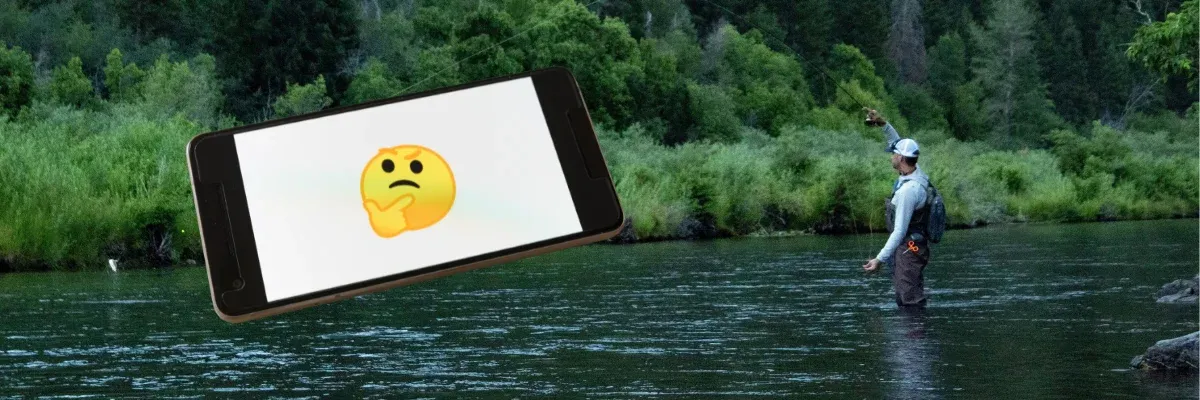
FAQs
What should I look for in a fly fishing rod as a beginner?
Look for a rod that is 8-9 feet long, with a weight rating of 4-6. Choose a graphite material for its lightness and durability. A medium or medium-fast action rod is best for learning. Invest in a quality rod within the $100-$300 range for a good balance of performance and affordability.
How much should I spend on my first fly fishing rod?
Spend between $100 and $300 on your first fly fishing rod. This range offers good quality without overspending. Consider beginner kits that include the rod, reel, and line for added value and convenience.
Are fly rod combos worth it for beginners?
Yes, fly rod combos are worth it for beginners. They include a rod, reel, line, and often a case, ensuring compatibility and ease of use. Combos are cost-effective and simplify the learning process.





